A monster is a type of fictional creature found in horror, fantasy, science fiction, folklore, mythology and religion.

Marion Hugh "Suge" Knight Jr. is an American music executive and convicted felon who is the co-founder and former CEO of Death Row Records. Knight was a central figure in gangsta rap's commercial success in the 1990s. This feat is attributed to the record label's first two album releases: Dr. Dre's The Chronic in 1992 and Snoop Dogg's Doggystyle in 1993. Knight is serving a 28-year sentence in prison for a fatal hit-and-run in 2015.

Prozac Nation is a memoir by American writer Elizabeth Wurtzel published in 1994. The book describes the author's experiences with atypical depression, her own character failings and how she managed to live through particularly difficult periods while completing college and working as a writer. Prozac is a trade name for the antidepressant fluoxetine. Wurtzel originally titled the book I Hate Myself and I Want To Die but her editor convinced her otherwise. It ultimately carried the subtitle Young and Depressed in America: A Memoir.

Orlando Tive "Baby Lane" Anderson was an American gang member suspected in the murder of Tupac Shakur. Anderson belonged to the California-based gang known as the South Side Compton Crips. Detective Tim Brennan of the Compton Police Department filed an affidavit naming Anderson as a suspect; he denied involvement and was never charged. Anderson's uncle, Duane Keith Davis, was charged with Shakur's murder on September 29, 2023.

Michiko Kakutani is an American writer and retired literary critic, best known for reviewing books for The New York Times from 1983 to 2017. In that role, she won the Pulitzer Prize for Criticism in 1998.

Colors is a 1988 American police procedural action crime film starring Sean Penn and Robert Duvall, and directed by Dennis Hopper. The film takes place in the gang ridden neighborhoods of Los Angeles: late-1980s South Central Los Angeles, Echo Park, Westlake and East Los Angeles. The film centers on Bob Hodges (Duvall), an experienced Los Angeles Police Department C.R.A.S.H. officer, and his rookie partner, Danny McGavin (Penn), who try to stop the gang violence between the Bloods, the Crips, and Hispanic street gangs. Colors relaunched Hopper as a director 19 years after Easy Rider, and inspired discussion over its depiction of gang life and gang violence.
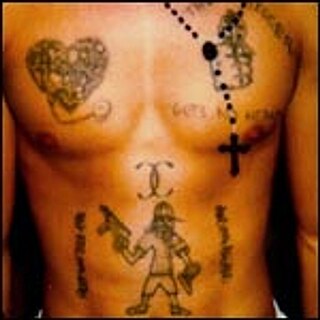
The Crips are an alliance of street gangs that is based in the coastal regions of Southern California. Founded in Los Angeles, California, in 1969, mainly by Raymond Washington and Stanley Williams, the Crips began as an alliance between two autonomous gangs, and developed into a loosely connected network of individual "sets", often engaged in open warfare with one another. Its members have traditionally worn blue clothing since around 1973.

Richard Lee Bass was an American football fullback who played for the Los Angeles Rams of the National Football League (NFL) from 1960 to 1969. He played college football for the Pacific Tigers.
Bastards of the Party is a 2005 American documentary film directed by former Bloods gang-member Cle Sloan and produced by Antoine Fuqua. The film explores the creation of two of Los Angeles's most notorious gangs, the Crips and the Bloods, from the perspective of the Los Angeles community. The film also denounces gang violence and presents meaningful solutions from former gang members to stop this problem.
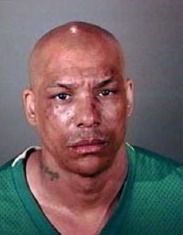
Sanyika Shakur, also known by his former street moniker Monster or Monster Kody, was an American author and former gangster. He was a member of the Los Angeles-based Eight Tray Gangster Crips. He got his nickname as a 13-year-old gang member when he beat and stomped a robbery victim until he was disfigured. Shakur claimed to have reformed in prison, joined the Republic of New Afrika movement, and wrote a 1993 memoir called Monster: The Autobiography of an L.A. Gang Member.
Brian Masters is a British writer, best known for his biographies of serial killers. He has also written books on French literature, the British aristocracy, and theatre, and has worked as a translator.

Colton Simpson is a former Crip who is serving a 126-year prison sentence under California's three-strikes law.

True Compass is the posthumous memoir of United States Senator Edward M. Kennedy that was released September 14, 2009, by Twelve, a division of the Hachette book group.
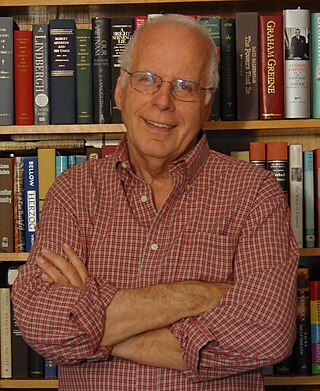
Robert Hilburn is an American pop music critic, author, and radio host. As critic and music editor at the Los Angeles Times from 1970 to 2005, his reviews, essays and profiles appeared in publications around the world. Hilburn has since written a memoir and best-selling biographies of Johnny Cash and Paul Simon. He was a member of the nominating committee of the Rock and Roll Hall of Fame for more than twenty years, and lives in Los Angeles.

Who I Am is a memoir by rock guitarist and composer Pete Townshend of the Who. It was published by HarperCollins in October 2012 in both book and e-book format, plus an unabridged 15-CD audiobook read by Townshend. The book chronicles Townshend's upbringing in London, the formation and evolution of the Who, and his struggles with rock stardom and drugs and alcohol. The title is a play on words, referring to the Who's hit single, "Who Are You" as well as the album of the same name.

On September 7, 1996, at 11:15 p.m. (PDT), Tupac Shakur, a 25-year old American rapper, was fatally shot in a drive-by shooting in Las Vegas, Nevada. The shooting occurred when the car carrying Shakur was stopped at a red light at East Flamingo Road and Koval Lane.
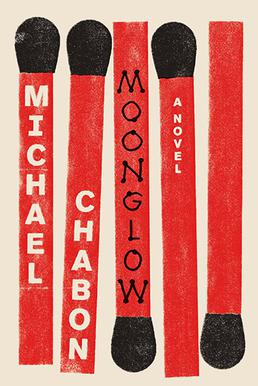
Moonglow is a 2016 novel by Michael Chabon. The book chronicles the life of Chabon's grandfather, a WW2 soldier, engineer and rocket enthusiast who marries a troubled Jewish survivor from France and lives a challenging, wandering life in postwar America. Chabon tells the story using a mixture of strict memoir and creative fiction writing. The narrator functions as a proxy for the author, Chabon.

M Train is a 2015 memoir written by Patti Smith. Smith's audiobook recording of M Train earned a Grammy Award nomination for Best Spoken Word Album.
Duane Keith "Keefe D" Davis is an American gang member. He was charged with involvement in the 1996 murder of Tupac Shakur.
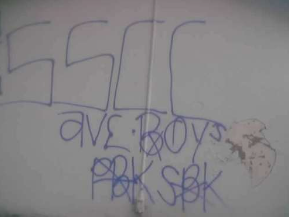
The South Side Compton Crips are a "set" of the Crips gang alliance, based in Compton, California. This gang is known for the murder of Tupac Shakur.
















